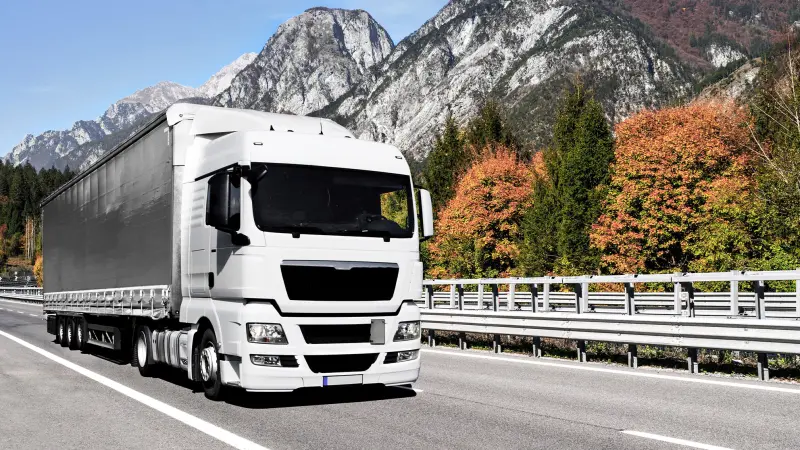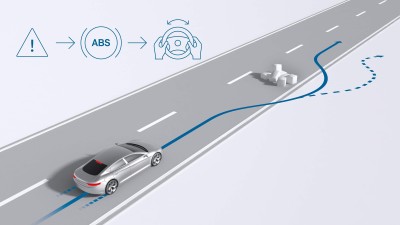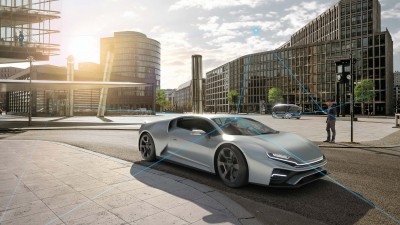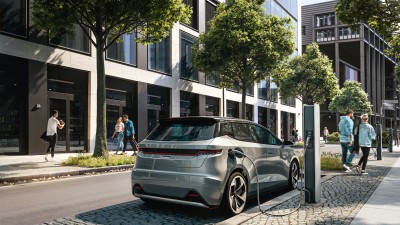Passive safety systems
Our airbag system comprises scalable control units and integrated sensors for all markets, vehicle types, segments, and architectures, and ensures optimum protection of vehicle occupants and pedestrians. The airbag control unit can also be used as an event data recorder (EDR).
Airbag system with external sensors
Ideal selection of airbag control units with external sensors. Tailored to your airbag system – according to the specific vehicle type, segment, or architecture.
Before and during an accident, the vehicle electronics have only milliseconds to measure, analyze, and react. What happens in these fractions of a second can mean the difference between life and death. That is why we do everything to ensure that our active and passive safety systems recognize dangers before an accident can even occur. The relevant sensor and evaluation systems deliver maximum performance in this very short space of time. Based on our tried-and-tested Bosch systems for reliable pedestrian and occupant protection , we provide you with tailored solutions for the safety restraint system – regardless of your vehicle's powertrain system.
Alongside our systems for passenger cars (12 volts), we also offer customer-specific solutions for light and heavy commercial vehicles (24 volts), which are subject to special requirements or legal regulations (e.g., use of the J1939 communication protocol or existence of an event data recorder).

Find out more
As one of the leading partners for airbag systems, we are very familiar with the ever-changing requirements of the market. Based on sophisticated Bosch products and systems, we engineer customized solutions for all vehicle types, segments, and architectures.
From the initial study to volume production maturity, we provide made-to-measure solutions for any production batch size.
Based on sophisticated Bosch products and systems, we also engineer individual configurations for passive safety systems for all vehicle types, segments, and architectures.
Thanks to Bosch sensor technology and integrated chips, our control units not only ensure effective occupant protection but also boast a number of innovative features:
- Battery protection function for electric vehicles incl. high-voltage battery disconnection in crash situations
- Multi-collision brake
- Provision of crash information to the network
- Small damage detection
- Detection of "off-zone" crash detection
- Central pole detection
- Occupant protection saves lives and helps to prevent injuries to vehicle occupants in the event of a collision
- Reliable airbag systems from the Bosch portfolio
- Precise integration into the vehicle's existing E/E architecture
- 12-volt systems for use in passenger cars as well as 24-volt systems for the commercial vehicle sector
- All markets worldwide can be served, taking into account country-specific requirements
Algorithm and calibration engineering
Scalable airbag algorithm, individually parameterized for your vehicle.
Algorithms detect head-on, rear-end, and side collisions, as well as vehicle rollovers to ensure targeted activation of the safety restraint systems. This reduces the injury risk in the event of an accident.
Our detection system recognizes collisions with pedestrians and activates vehicle-specific protection mechanisms, such as lifting the car's hood. This guarantees optimum pedestrian protection.
An optional integrated battery protection function in the airbag control system reduces the fire risk for hybrid and electric vehicles.

Find out more
We record essential accident parameters for you with the aid of external accident research centers, taking into account the specifics of your vehicle as well as any country-specific requirements.
To facilitate the integration into the overall vehicle (diagnostics/network), we develop and validate manufacturer-specific software features for you.
We also provide you with vehicle-specific crash calibration for your programming during vehicle production.
We work with you to establish the ideal installation position for our system in the target vehicle.
We verify that our components are handled correctly on your production line to safeguard their optimum performance.
We calibrate our systems based on the available data to maximize their performance in your vehicle.
- Optimum occupant protection thanks to individual calibration of our algorithms
- Individual deployment logic based on the available vehicle inputs
- High-voltage battery deployment minimizes the risk of injuries to occupants and rescue workers in the event of a crash
- Minimized accident risk for pedestrians in the event of a collision (pedestrian and VRU protection). VRU (vulnerable road user) protection raises safety levels for pedestrians, cyclists, and motorcycle riders, for example.
6D inertial sensors
ESP® sensors as well as 6D inertial sensors can be integrated into the airbag control unit. This not only minimizes the number of control units in the network but also reduces costs.
With the airbag plus of the 12th generation , Bosch has devised a concept that combines airbag control and inertial sensors in a single, compact airbag control unit, thereby saving both space and costs. The sensor data is transmitted via CAN so that it is easily accessible to other network participants.
The gen12 airbag plus can also be supplemented with a complete set of yaw-rate and acceleration sensors to cover all three spatial axes (6D). This ensures support for ESP®, rollover protection, and other vehicle functions.

Find out more
The ESP® inertial sensors can be integrated into our compact airbag control unit, thereby saving both space and costs. With a complete set of yaw-rate and acceleration sensors, all three spatial axes (6D) are included in the measurements. This sensor information is also made available to other vehicle control units via the bus network.
Integration into systems that do not contain any Bosch ESP® components is also easily achievable.
- Airbag and inertial sensors in a single control unit
- One less control unit in the vehicle
- Support for Bosch ESP® and braking systems as well as for third-party systems
- Sensor information is made available to other control units in the bus network
Event data recorder
Storage of relevant crash data in an event data recorder following an accident and subsequent access via a defined interface.
You can also choose to use the airbag control unit as an event data recorder (EDR).
An EDR records data before, during, and after an event. This data (e.g., the vehicle speed) can then be used to analyze and reconstruct events. The recordings serve as proof that the safety restraint system has functioned correctly. In addition, an EDR is used to collect statistical accident data.
We also consider market-specific legal requirements regarding the functionality of the event data recorder and the storage of corresponding data for passenger cars and commercial vehicles.

Find out more
- The event data recorder integrated into our airbag control unit complies with country-specific regulations for both passenger cars and commercial vehicles and, accordingly, is available either as a 12-volt or a 24-volt system.
- The relevant data is received by the airbag control unit via the communication network and saved in the event data recorder along with the internal airbag data. The recorded accident data can be accessed via a defined interface (e.g., CAN).
- Among other things, the following data is stored:
- Acceleration values
- Airbag deployment times
- Vehicle speed
- Accelerator and brake pedal activities
- In addition, statistical accident data can be collected to perform effective accident investigations and analyze the performance of safety devices, thereby improving traffic safety across the board.
- Event data recorder is integrated into the airbag control unit
- EDR can be used worldwide
- Support for all markets and vehicle segments (passenger cars and commercial vehicles)
- Internal data from the airbag unit is stored along with external vehicle data
- Event data recorder can be adapted to your specific evaluation tools






